research papers
publications in reversed chronological order
forthcoming
-
 Balanced contributions, consistency, and value for games with externalitiesAndré Casajus , Yukihiko Funaki , and Frank HuettnerEuropean Journal of Operational Research, forthcoming
Balanced contributions, consistency, and value for games with externalitiesAndré Casajus , Yukihiko Funaki , and Frank HuettnerEuropean Journal of Operational Research, forthcomingWe consider fair and consistent extensions of the Shapley value for games with externalities. Based on the restriction identified by Casajus et al. (2024, Games Econ. Behavior 147, 88-146), we define balanced contributions, Sobolev’s consistency, and Hart and Mas-Colell’s consistency for games with externalities, and we show that these properties lead to characterizations of the generalization of the Shapley value introduced by Macho-Stadler et al. (2007, J. Econ. Theory 135, 339-356), that parallel important characterizations of the Shapley value.
@article{CaFuHu2025, title = {Balanced contributions, consistency, and value for games with externalities}, journal = {European Journal of Operational Research}, year = {forthcoming}, author = {Casajus, André and Funaki, Yukihiko and Huettner, Frank}, keywords = {Shapley value, partition function form, random partition, restriction operator}, doi = {doi.org/10.1016/j.ejor.2025.11.006}, }
2024
-
 Random partitions, potential, value, and externalitiesAndré Casajus , Yukihiko Funaki , and Frank HuettnerGames and Economic Behavior, 2024
Random partitions, potential, value, and externalitiesAndré Casajus , Yukihiko Funaki , and Frank HuettnerGames and Economic Behavior, 2024The Shapley value equals a player’s contribution to the potential of a game. The potential is a most natural one-number summary of a game, which can be computed as the expected accumulated worth of a random partition of the players. This computation integrates the coalition formation of all players and readily extends to games with externalities. We investigate those potential functions for games with externalities that can be computed this way. It turns out that the potential that corresponds to the MPW solution introduced by Macho-Stadler et al. (2007, J. Econ. Theory 135, 339–356) is unique in the following sense. It is obtained as the expected accumulated worth of a random partition, it generalizes the potential for games without externalities, and it induces a solution that satisfies the null player property even in the presence of externalities.
@article{CaFuHu2024, title = {Random partitions, potential, value, and externalities}, author = {Casajus, André and Funaki, Yukihiko and Huettner, Frank}, pages = {88-106}, doi = {doi.org/10.1016/j.geb.2024.06.004}, journal = {Games and Economic Behavior}, volume = {147}, year = {2024}, } -
 Erratum to “Consumer Choice Under Limited Attention When Alternatives Have Different Information Costs”Frank Huettner , Tamer Boyacı , and Yalçın AkçayOperations Research, 2024
Erratum to “Consumer Choice Under Limited Attention When Alternatives Have Different Information Costs”Frank Huettner , Tamer Boyacı , and Yalçın AkçayOperations Research, 2024There is an error in one of the results of our paper [Huettner F, Boyacı T, Akçay Y (2019) Consumer choice under limited attention when alternatives have different information costs. Oper. Res. 67(3):671–699]. In this erratum, we point out the error and provide a correction based on Walker-Jones [(2023) Rational inattention with multiple attributes. J. Econom. Theory 212:105688]. Our key characterizations, insights, and numerical examples do not depend on this error and, hence, remain valid. The main implication is on the stopping condition used in the algorithm. We propose a fix based on the new sufficient condition and, if needed, standard convex optimization techniques.
@article{HuBoAk2024OR, author = {Huettner, Frank and Boyacı, Tamer and Akçay, Yalçın}, title = {Erratum to “Consumer Choice Under Limited Attention When Alternatives Have Different Information Costs”}, journal = {Operations Research}, pages = {1536-1538}, volume = {72}, number = {4}, year = {2024}, doi = {doi.org/10.1287/opre.2023.0476}, url = {https://doi.org/10.1287/opre.2023.0476}, }
2023
-
 Coalitional Manipulations and Immunity of the Shapley ValueChristian Basteck , and Frank Huettner2023
Coalitional Manipulations and Immunity of the Shapley ValueChristian Basteck , and Frank Huettner2023We consider manipulations in the context of coalitional games, where a coalition aims to increase the total payoff of its members. An allocation rule is immune to coalitional manipulation if no coalition can benefit from internal reallocation of worth on the level of its subcoalitions (reallocation-proofness), and if no coalition benefits from a lower worth while all else remains the same (weak coalitional monotonicity). Replacing additivity in Shapley’s original characterization by these requirements yields a new foundation of the Shapley value, i.e., it is the unique efficient and symmetric allocation rule that awards nothing to a null player and is immune to coalitional manipulations. We further find that for efficient allocation rules, reallocation-proofness is equivalent to constrained marginality, a weaker variant of Young’s marginality axiom. Our second characterization improves upon Young’s characterization by weakening the independence requirement intrinsic to marginality.
@misc{BasHue2023, title = {Coalitional Manipulations and Immunity of the Shapley Value}, author = {Basteck, Christian and Huettner, Frank}, year = {2023}, eprint = {2310.20415}, archiveprefix = {arXiv}, primaryclass = {econ.TH}, doi = {doi.org/10.48550/arXiv.2310.20415}, } - Liability Situations with Successive TortfeasorsFrank Huettner , and Dominik KarosIn Advances in Collective Decision Making: Interdisciplinary Perspectives for the 21st Century , 2023
Given a tort that involves several tortfeasors, an allocation scheme attributes to each of them that part of the damage that reflects their responsibility. We consider successive torts—i.e., torts that involve a causality chain—and show that simple and intuitive principles, which are well-known in the law of tort, uniquely define an allocation scheme. We show that this scheme incentivizes agents to exhibit a certain level of care, creating an efficient prevention of accidents. We further describe the unique rule according to which a liability situation has to be adjusted after a partial settlement such that incentives to settle early are created.
@incollection{HueKar2023, title = {Liability Situations with Successive Tortfeasors}, author = {Huettner, Frank and Karos, Dominik}, booktitle = {Advances in Collective Decision Making: Interdisciplinary Perspectives for the 21st Century}, pages = {191-204}, year = {2023}, publisher = {Springer}, doi = {10.1007/978-3-031-21696-1_12}, }
2019
-
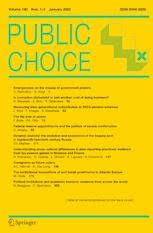 The Coleman-Shapley index: being decisive within the coalition of the interestedAndré Casajus , and Frank HuettnerPublic Choice, Mar 2019
The Coleman-Shapley index: being decisive within the coalition of the interestedAndré Casajus , and Frank HuettnerPublic Choice, Mar 2019The Coleman power of a collectivity to act (CPCA) is a popular statistic that reflects the ability of a committee to pass a proposal. Applying the Shapley value to that measure, we derive a new power index—the Coleman–Shapley index (CSI)—indicating each voter’s contribution to the CPCA. The CSI is characterized by four axioms: anonymity, the null voter property, the transfer property, and a property stipulating that the sum of the voters’ power equals the CPCA. Similar to the Shapley–Shubik index (SSI) and the Penrose–Banzhaf index (PBI), our new index reflects the expectation of being a pivotal voter. Here, the coalitional formation model underlying the CPCA and the PBI is combined with the ordering approach underlying the SSI. In contrast to the SSI, voters are ordered not according to their agreement with a potential bill, but according to their vested interest in it. Among the most interested voters, power is then measured in a way similar to the PBI. Although we advocate the CSI over the PBI so as to capture a voter’s influence on whether a proposal passes, our index gives new meaning to the PBI. The CSI is a decomposer of the PBI, splitting the PBI into a voter’s power as such and the voter’s impact on the power of the other voters by threatening to block any proposal. We apply our index to the EU Council and the UN Security Council.
@article{CasHue-colsha, author = {Casajus, Andr{\'{e}} and Huettner, Frank}, title = {The Coleman-Shapley index: being decisive within the coalition of the interested}, doi = {doi.org/10.1007/s11127-019-00654-y}, journal = {Public Choice}, month = mar, publisher = {Springer Nature}, year = {2019}, pages = {275-289}, volume = {181}, url = {https://doi.org/10.1007/s11127-019-00654-y}, } -
 Consumer Choice Under Limited Attention When Alternatives Have Different Information CostsFrank Huettner , Tamer Boyacı , and Yalçın AkçayOperations Research, Mar 2019
Consumer Choice Under Limited Attention When Alternatives Have Different Information CostsFrank Huettner , Tamer Boyacı , and Yalçın AkçayOperations Research, Mar 2019Consumers often do not have complete information about the choices they face and, therefore, have to spend time and effort acquiring information. Because information acquisition is costly, consumers trade off the value of better information against its cost and make their final product choices based on imperfect information. We model this decision using the rational inattention approach and describe the rationally inattentive consumer’s choice behavior when the consumer faces alternatives with different information costs. To this end, we introduce an information cost function that distinguishes between direct and implied information. We then analytically characterize the optimal choice probabilities. We find that nonuniform information costs can have a strong impact on product choice, which gets particularly conspicuous when the product alternatives are otherwise very similar. There are significant implications on how a seller should provide information about its products and how changes to the product set impacts consumer choice. For example, nonuniform information costs can lead to situations in which it is disadvantageous for the seller to provide easier access to information for a particular product and to situations in which the addition of an inferior (never chosen) product increases the market share of another existing product (i.e., failure of regularity). We also provide an algorithm to compute the optimal choice probabilities and discuss how our framework can be empirically estimated from suitable choice data.
@article{HuBoAk2019OR, author = {Huettner, Frank and Boyacı, Tamer and Akçay, Yalçın}, title = {Consumer Choice Under Limited Attention When Alternatives Have Different Information Costs}, journal = {Operations Research}, volume = {67}, number = {3}, pages = {671-699}, year = {2019}, doi = {10.1287/opre.2018.1828}, url = {https://doi.org/10.1287/opre.2018.1828}, }
2018
-
 Decomposition of solutions and the Shapley valueAndré Casajus , and Frank HuettnerGames and Economic Behavior, Mar 2018
Decomposition of solutions and the Shapley valueAndré Casajus , and Frank HuettnerGames and Economic Behavior, Mar 2018We suggest foundations for the Shapley value and for the naïve solution, which assigns to any player the difference between the worth of the grand coalition and its worth after this player left the game. To this end, we introduce the decomposition of solutions for cooperative games with transferable utility. A decomposer of a solution is another solution that splits the former into a direct part and an indirect part. While the direct part (the decomposer) measures a player’s contribution in a game as such, the indirect part indicates how she affects the other players’ direct contributions by leaving the game. The Shapley value turns out to be unique decomposable decomposer of the naïve solution.
@article{CasHue-deva, author = {Casajus, André and Huettner, Frank}, journaltitle = {Games and Economic Behavior}, title = {Decomposition of solutions and the {Shapley} value}, pages = {37-48}, volume = {108}, doi = {10.1016/j.geb.2017.05.001}, url = {https://doi.org/10.1016/j.geb.2017.05.001}, journal = {Games and Economic Behavior}, year = {2018}, } -
 Efficient extensions of communication valuesSylvain Béal , André Casajus , and Frank HuettnerAnnals of Operations Research, Mar 2018
Efficient extensions of communication valuesSylvain Béal , André Casajus , and Frank HuettnerAnnals of Operations Research, Mar 2018We study values for transferable utility games enriched by a communication graph. The most well-known such values are component-efficient and characterized by some deletion link property. We study efficient extensions of such values: for a given component-efficient value, we look for a value that (i) satisfies efficiency, (ii) satisfies the link-deletion property underlying the original component-efficient value, and (iii) coincides with the original component-efficient value whenever the underlying graph is connected. Béal et al. (Soc Choice Welf 45:819–827, 2015) prove that the Myerson value (Myerson in Math Oper Res 2:225–229, 1977) admits a unique efficient extension, which has been introduced by van den Brink et al. (Econ Lett 117:786–789, 2012). We pursue this line of research by showing that the average tree solution (Herings et al. in Games Econ Behav 62:77–92, 2008) and the compensation solution (Béal et al. in Int J Game Theory 41:157–178, 2012b) admit similar unique efficient extensions, and that there exists no efficient extension of the position value (Meessen in Communication games, 1988; Borm et al. in SIAM J Discrete Math 5:305–320, 1992). As byproducts, we obtain new characterizations of the average tree solution and the compensation solution, and of their efficient extensions.
@article{BeCaHu2017AnnOR, author = {B{\'{e}}al, Sylvain and Casajus, Andr{\'{e}} and Huettner, Frank}, journal = {Annals of Operations Research}, title = {Efficient extensions of communication values}, doi = {10.1007/s10479-017-2661-6}, number = {1-2}, year = {2018}, pages = {41-56}, volume = {264}, publisher = {Springer Science and Business Media {LLC}}, url = {https://doi.org/10.1007/s10479-017-2661-6}, } -
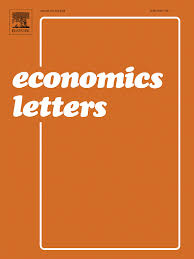 Calculating direct and indirect contributions of players in cooperative games via the multi-linear extensionAndré Casajus , and Frank HuettnerEconomics Letters, Mar 2018
Calculating direct and indirect contributions of players in cooperative games via the multi-linear extensionAndré Casajus , and Frank HuettnerEconomics Letters, Mar 2018The resolution of a solution for cooperative games is a recently developed tool to decompose a solution into a player’s direct contribution in a game and her (higher-order) indirect contribution, i.e., her contribution to other players’ direct contributions. We provide new formulae for resolutions and their potentials, which facilitate the calculation of them in large (voting) games. These formulae make use of the multi-linear extension of cooperative games with transferable utility.
@article{CasHue2018EcoLet, title = {Calculating direct and indirect contributions of players in cooperative games via the multi-linear extension}, journal = {Economics Letters}, volume = {164}, pages = {27-30}, year = {2018}, issn = {0165-1765}, doi = {doi.org/10.1016/j.econlet.2017.12.011}, url = {https://doi.org/10.1016/j.econlet.2017.12.011}, author = {Casajus, André and Huettner, Frank}, keywords = {Shapley value, Decomposition, Resolution, Potential, Multi-linear extension}, }
2016
-
 On the existence of efficient and fair extensions of communication values for connected graphsSylvain Béal , André Casajus , and Frank HuettnerEconomics Letters, Mar 2016
On the existence of efficient and fair extensions of communication values for connected graphsSylvain Béal , André Casajus , and Frank HuettnerEconomics Letters, Mar 2016We study values for TU games with a communication graph (CO-values). In particular, we show that CO-values for connected graphs that are fair and efficient allow for a unique efficient and fair extension to the full domain.
@article{BeCaHu2016EcoLet, title = {On the existence of efficient and fair extensions of communication values for connected graphs}, journal = {Economics Letters}, volume = {146}, pages = {103-106}, year = {2016}, issn = {0165-1765}, doi = {https://doi.org/10.1016/j.econlet.2016.07.030}, url = {https://doi.org/10.1016/j.econlet.2016.07.030}, author = {Béal, Sylvain and Casajus, André and Huettner, Frank}, keywords = {Communication graph, Fairness, Efficiency, Efficient extension, Fair extension, Myerson value}, } -
 Characterizations of weighted and equal division valuesTheory and Decision, Mar 2016
Characterizations of weighted and equal division valuesTheory and Decision, Mar 2016New and recent axioms for cooperative games with transferable utilities are introduced. The non-negative player axiom requires to assign a non-negative payoff to a player that belongs to coalitions with non-negative worth only. The axiom of addition invariance on bi-partitions requires that the payoff vector recommended by a value should not be affected by an identical change in worth of both a coalition and the complementary coalition. The nullified solidarity axiom requires that if a player who becomes null weakly loses (gains) from such a change, then every other player should weakly lose (gain) too. We study the consequence of imposing some of these axioms in addition to some classical axioms. It turns out that the resulting values or set of values have all in common to split efficiently the worth achieved by the grand coalition according to an exogenously given weight vector. As a result, we also obtain new characterizations of the equal division value.
@article{BCHRS-wdv, author = {Béal, Sylvain and Casajus, André and Huettner, Frank and Rémila, Eric and Solal, Philippe}, journaltitle = {Theory and Decision}, title = {Characterizations of weighted and equal division values}, number = {4}, pages = {649-667}, volume = {80}, journal = {Theory and Decision}, year = {2016}, doi = {doi.org/10.1007/s11238-015-9519-7}, url = {https://doi.org/10.1007/s11238-015-9519-7}, } - The Need for Permission, the Power to Enforce, and Duality in Cooperative Games with a HierarchyFrank Huettner , and Harald WieseInternational Game Theory Review, Mar 2016
A cooperative game with transferable utility (TU game) captures a situation in which players can achieve certain payoffs by cooperating. We assume that the players are part of a hierarchy. In the literature, this invokes the assumption that subordinates cannot cooperate without the permission of their superiors. Instead, we assume that superiors can force their subordinates to cooperate. We show how both notions correspond to each other by means of dual TU games. This way, we capture the idea that a superiors’ ability to enforce cooperation can be seen as the ability to neutralize her subordinate’s threat to abstain from cooperation. Moreover, we introduce the coercion value for games with a hierarchy and provide characterizations thereof that reveal the similarity to the permission value.
@article{HueWie2016, author = {Huettner, Frank and Wiese, Harald}, title = {The Need for Permission, the Power to Enforce, and Duality in Cooperative Games with a Hierarchy}, journal = {International Game Theory Review}, volume = {18}, number = {04}, pages = {1650015}, year = {2016}, doi = {10.1142/S0219198916500158}, url = {https://doi.org/10.1142/S0219198916500158}, }
2015
-
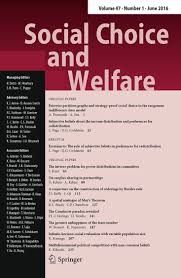 Efficient extensions of the Myerson valueSylvain Béal , André Casajus , and Frank HuettnerSocial Choice and Welfare, Mar 2015
Efficient extensions of the Myerson valueSylvain Béal , André Casajus , and Frank HuettnerSocial Choice and Welfare, Mar 2015@article{BeCaHu-extmy, author = {Béal, Sylvain and Casajus, André and Huettner, Frank}, title = {Efficient extensions of the {Myerson} value}, number = {4}, pages = {819-827}, volume = {45}, journal = {Social Choice and Welfare}, year = {2015}, doi = {doi.org/10.1007/s00355-015-0885-4}, url = {https://doi.org/10.1007/s00355-015-0885-4}, } -
 Potential, value, and the multilinear extensionAndré Casajus , and Frank HuettnerEconomics Letters, Mar 2015
Potential, value, and the multilinear extensionAndré Casajus , and Frank HuettnerEconomics Letters, Mar 2015We provide new formulae for the potential of the Shapley value that use the multilinear extension of coalitional games with transferable utility.
@article{CasHue-potmuli, title = {Potential, value, and the multilinear extension}, journal = {Economics Letters}, volume = {135}, pages = {28-30}, year = {2015}, issn = {0165-1765}, doi = {doi.org/10.1016/j.econlet.2015.07.014}, url = {https://doi.org/10.1016/j.econlet.2015.07.014}, author = {Casajus, André and Huettner, Frank}, keywords = {Shapley value, Potential, Random partition, Concentration of power}, } -
 A proportional value for cooperative games with a coalitional structureFrank HuettnerTheory and Decision, Mar 2015
A proportional value for cooperative games with a coalitional structureFrank HuettnerTheory and Decision, Mar 2015We introduce a solution concept for cooperative games with transferable utility and a coalition structure that is proportional for two-player games. Our value is obtained from generalizing a proportional value for cooperative games with transferable utility (Ortmann 2000) in a way that parallels the extension of the Shapley value to the Owen value. We provide two characterizations of our solution concept, one that employs a property that can be seen as the proportional analog to Myerson’s balanced contribution property; and a second one that relies on a consistency property.
@article{huettner-propcs, author = {Huettner, Frank}, title = {A proportional value for cooperative games with a coalitional structure}, number = {2}, pages = {273-287}, volume = {78}, journal = {Theory and Decision}, year = {2015}, doi = {doi.org/10.1007/s11238-014-9420-9}, url = {https://doi.org/10.1007/s11238-014-9420-9}, }
2014
-
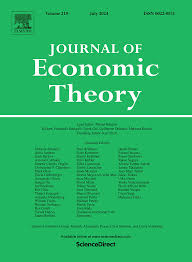 Weakly monotonic solutions for cooperative gamesAndré Casajus , and Frank HuettnerJournal of Economic Theory, Mar 2014
Weakly monotonic solutions for cooperative gamesAndré Casajus , and Frank HuettnerJournal of Economic Theory, Mar 2014The principle of weak monotonicity for cooperative games states that if a game changes so that the worth of the grand coalition and some player’s marginal contribution to all coalitions increase or stay the same, then this player’s payoff should not decrease. We investigate the class of values that satisfy efficiency, symmetry, and weak monotonicity. It turns out that this class coincides with the class of egalitarian Shapley values. Thus, weak monotonicity reflects the nature of the egalitarian Shapley values in the same vein as strong monotonicity reflects the nature of the Shapley value. An egalitarian Shapley value redistributes the Shapley payoffs as follows: First, the Shapley payoffs are taxed proportionally at a fixed rate. Second, the total tax revenue is distributed equally among all players.
@article{CasHue2014JET, title = {Weakly monotonic solutions for cooperative games}, journal = {Journal of Economic Theory}, volume = {154}, pages = {162-172}, year = {2014}, issn = {0022-0531}, doi = {doi.org/10.1016/j.jet.2014.09.004}, url = {https://doi.org/10.1016/j.jet.2014.09.004}, author = {Casajus, André and Huettner, Frank}, keywords = {Egalitarian Shapley values, Redistribution, Solidarity, TU games, Weak monotonicity}, } -
 Solidarity within a fixed communityEconomics Letters, Mar 2014
Solidarity within a fixed communityEconomics Letters, Mar 2014We study the consequences of a solidarity property that specifies how a value for cooperative games should respond if some player forfeits his productivity, i.e., becomes a null player. Nullified solidarity states that in this case either all players weakly gain together or all players weakly lose together. Combined with efficiency, the null game property, and a weak fairness property, we obtain a new characterization of the equal division value.
@article{BCHRS-nullified, title = {Solidarity within a fixed community}, journal = {Economics Letters}, volume = {125}, number = {3}, pages = {440-443}, year = {2014}, issn = {0165-1765}, doi = {doi.org/10.1016/j.econlet.2014.10.023}, url = {https://doi.org/10.1016/j.econlet.2014.10.023}, author = {Béal, Sylvain and Casajus, André and Huettner, Frank and Rémila, Eric and Solal, Philippe}, keywords = {Equal division value, Nullified solidarity, Weak fairness, Population solidarity}, } -
 On a class of solidarity valuesAndré Casajus , and Frank HuettnerEuropean Journal of Operational Research, Mar 2014
On a class of solidarity valuesAndré Casajus , and Frank HuettnerEuropean Journal of Operational Research, Mar 2014We suggest a new one-parameter family of solidarity values for TU-games. The members of this class are distinguished by the type of player whose removal from a game does not affect the remaining players’ payoffs. While the Shapley value and the equal division value are the boundary members of this family, the solidarity value is its center. With exception of the Shapley value, all members of this family are asymptotically equivalent to the equal division value in the sense of Radzik (2013).
@article{CasHue-xinull, title = {On a class of solidarity values}, journal = {European Journal of Operational Research}, volume = {236}, number = {2}, pages = {583-591}, year = {2014}, issn = {0377-2217}, doi = {doi.org/10.1016/j.ejor.2013.12.015}, url = {https://doi.org/10.1016/j.ejor.2013.12.015}, author = {Casajus, André and Huettner, Frank}, keywords = {Solidarity, Null player out, Desirability, Positivity, Asymptotic equivalence}, } -
 Null, nullifying, or dummifying players: The difference between the Shapley value, the equal division value, and the equal surplus division valueAndré Casajus , and Frank HuettnerEconomics Letters, Mar 2014
Null, nullifying, or dummifying players: The difference between the Shapley value, the equal division value, and the equal surplus division valueAndré Casajus , and Frank HuettnerEconomics Letters, Mar 2014We provide new characterisations of the equal surplus division value. This way, the difference between the Shapley value, the equal surplus division value, and the equal division value is pinpointed to one axiom.
@article{CasHue-dummifying, title = {Null, nullifying, or dummifying players: The difference between the Shapley value, the equal division value, and the equal surplus division value}, journal = {Economics Letters}, volume = {122}, number = {2}, pages = {167-169}, year = {2014}, issn = {0165-1765}, doi = {doi.org/10.1016/j.econlet.2013.11.008}, url = {https://doi.org/10.1016/j.econlet.2013.11.008}, author = {Casajus, André and Huettner, Frank}, keywords = {Solidarity, Nullifying player, Dummifying player, Equal division value, Equal surplus division value, Monotonicity} }
2013
-
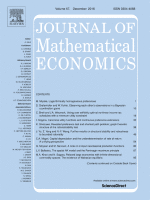 Null players, solidarity, and the egalitarian Shapley valuesAndré Casajus , and Frank HuettnerJournal of Mathematical Economics, Mar 2013
Null players, solidarity, and the egalitarian Shapley valuesAndré Casajus , and Frank HuettnerJournal of Mathematical Economics, Mar 2013The Shapley value probably is the most eminent single-point solution concept for TU-games. In its standard characterization, the null player property indicates the absence of solidarity among the players. First, we replace the null player property by a new axiom that guarantees null players non-negative payoffs whenever the grand coalition’s worth is non-negative. Second, the equal treatment property is strengthened into desirability. This way, we obtain a new characterization of the class of egalitarian Shapley values, i.e., of convex combinations of the Shapley value and the equal division solution. Within this characterization, additivity and desirability can be replaced by strong differential monotonicity, which translates higher productivity differentials into higher payoff differentials.
@article{CasHue2012egash, title = {Null players, solidarity, and the egalitarian Shapley values}, journal = {Journal of Mathematical Economics}, volume = {49}, number = {1}, pages = {58-61}, year = {2013}, issn = {0304-4068}, doi = {doi.org/10.1016/j.jmateco.2012.09.008}, url = {https://doi.org/10.1016/j.jmateco.2012.09.008}, author = {Casajus, André and Huettner, Frank}, keywords = {Solidarity, Egalitarian Shapley value, Equal division value, Desirability, Strong differential monotonicity}, }
2012
-
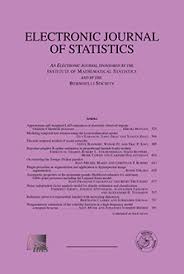 Axiomatic arguments for decomposing goodness of fit according to Shapley and Owen valuesFrank Huettner , and Marco SunderElectronic Journal of Statistics, Mar 2012
Axiomatic arguments for decomposing goodness of fit according to Shapley and Owen valuesFrank Huettner , and Marco SunderElectronic Journal of Statistics, Mar 2012We advocate the decomposition of goodness of fit into contributions of (groups of) regressor variables according to the Shapley value or—if regressors are exogenously grouped—the Owen value because of the attractive axioms associated with these values. A wage regression model with German data illustrates the method.
@article{HueSun2012EJS, author = {Huettner, Frank and Sunder, Marco}, title = {{Axiomatic arguments for decomposing goodness of fit according to Shapley and Owen values}}, volume = {6}, journal = {Electronic Journal of Statistics}, number = {none}, publisher = {Institute of Mathematical Statistics and Bernoulli Society}, pages = {1239 - 1250}, keywords = {GSOEP, Owen value, regression games, Shapley value, variance decomposition}, year = {2012}, doi = {10.1214/12-EJS710}, url = {https://doi.org/10.1214/12-EJS710}, }